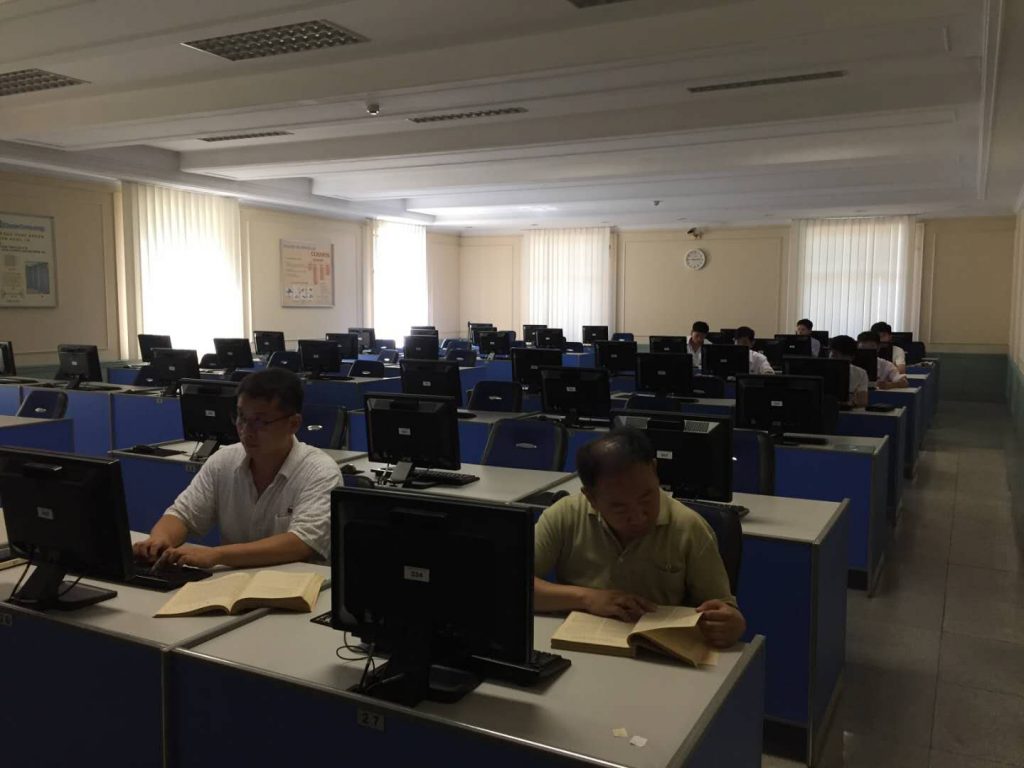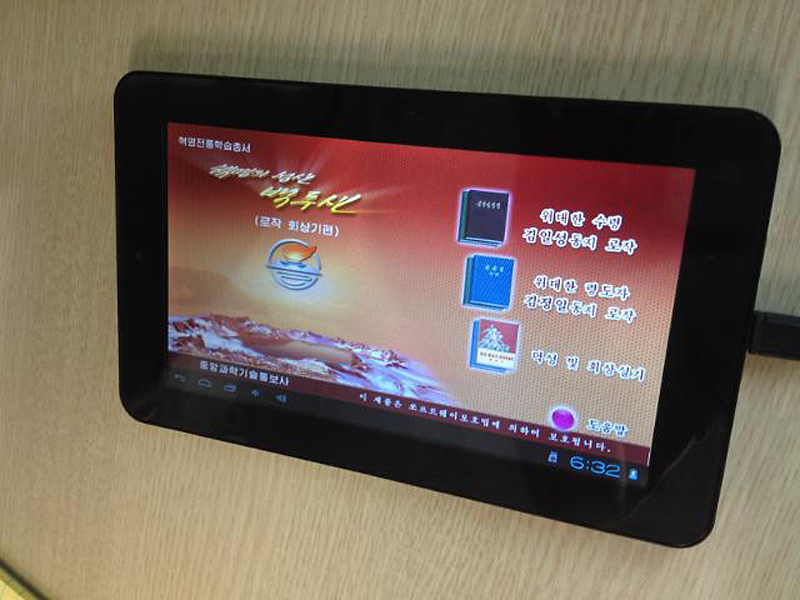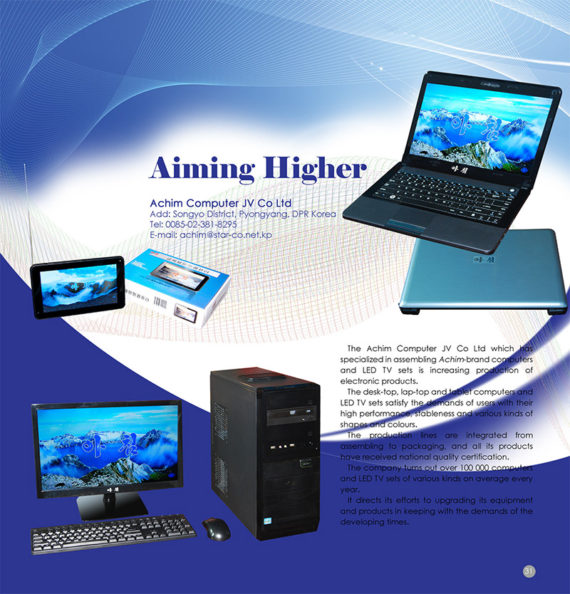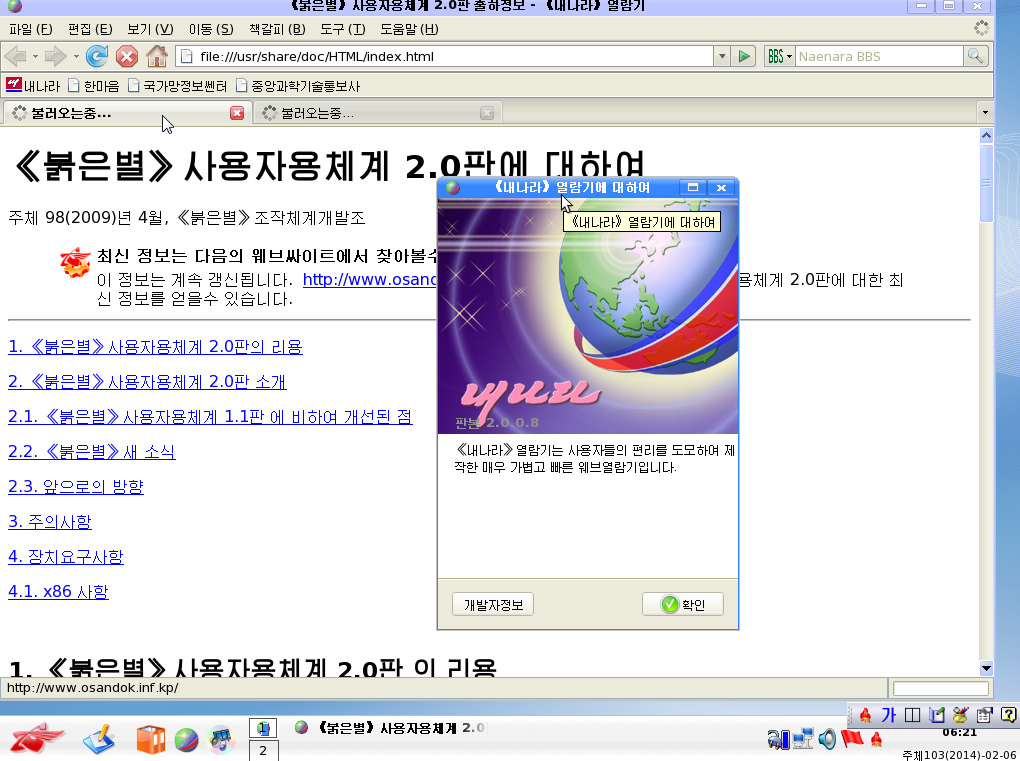
An interesting result of the endless economic embargoes on north Korea is that they need to do a lot of stuff themselves. Many products that are an easy import from just about anywhere else in the world simply cannot enter Korea, so naturally, they needed to get creative. One rather recent result has been the growth of an industry for north Korean computers.
Cold War Era

At the birth of the country, there were no north Korean computers. Computers in general were relegated to the wealthiest of nations and mostly existed for scientific research and military purposes at the time. Nothing akin to the modern computer would exist for quite some time and little evidence seems to exist of domestically produced computers of any type existing in Korea back then. What likely did exist was was limited proto-computer technology brought by the Soviet Union, later China and other eastern bloc countries.
Both Romania and East Germany were major exporters to the DPRK, so it’s likely that throughout the 60s and 70s, this is where the bulk of north Korean computers and technology would have come from, most likely contributing to the early nuclear program. Evidence does exist from at least 1975 that Romania and the DPRK were intending to co-operate on nuclear weapons, so it seems inevitable that this was occurring until the collapse of that country.
The earliest evidence of true domestic development I can find is from the late 1970s. The UN Development Program assisted in the construction of a small pilot integrated circuit plant, one which appears to have only become fully operational by 1985. Thus by the early 1990s, the DPRK was producing somewhere in the region of 20,000 north Korean computers per year. It can be said that the 1990s was the true birth of the computer age in the country, likely viewed as a necessity considering the rapid economic hardships hitting the country at this time, owing to the collapse of the eastern bloc.
Modern North Korean Computers

As we’ve established, the 1990’s was the birth of the DPRK’s domestic computer production. How fitting then, that the Korean Computer Center would be established on October 24th of 1990. While reportedly now somewhat less important to IT in north Korea, the KCC innovated many of the unique Korean inventions we now know of. Red Star OS was developed there. The Arirang smartphone and Samjiyon tablet were too! Rather interesting, the KCC is a rather internationally based company, with branch offices in allied nations like China and Syria, as well as allegedly in countries like Germany and the UAE. What these branches do is largely unknown, though we can assume research purposes play a large part.

It should be said, this is not the only computer company in the DPRK. Achim Computer was formed in 2002 and develops many other domestic products, while even more likely exist with far less recognition. As of 2016, Achim Computer claimed to be producing upwards of 100,000 electronic products per year, surely putting it as one of the country’s major suppliers if we assume these are all for domestic consumption. The company has however often functioned as a joint venture with China’s Panda Electronics, possibly meaning the company produces for export and also subcontracts work from China. It’s hard to say. It’s still quite definitely a major source of north Korean computers.

North Korean video games are another curiosity we’ve covered before but deserve another look as well. Not much is known about the companies, but we do know of one, that being Nosotek. This company was behind the famous ‘Pyongyang Racer’ game, as well as the production of many other domestic games particularly on PC and mobile, though it may have also been involved in the 2019 Moranbong video games console. This console appears to be a motion tracking machine, much like the Nintendo Wii. Little is currently known about it, but it’s certainly a fascinating thing!
North Korean Internet

The KCC also operates Naenara, this being the equivalent of a north Korean Google. Naenara is primarily used to browse the local intranet on north Korean computers, this being a kind of walled-off internet that allows websites developed in north Korea to be accessed, but not those outside. Similarly, only a select few Korean websites can be accessed by the global internet, these being sites that the government has designated as being allowed to do so.
The Korean intranet is called Kwangmyong, allegedly started in the year 2000, it has rapidly expanded and hosts several thousand websites. Exactly how many, we generally don’t know. Access to the Kwangmyong is generally quite limited for foreigners, only really being accessible with local north Korean computers which are themselves quite hard to get. We’ve seen evidence of a few standard website formats. Social networking, video sharing, online shopping, video games, a Wikipedia equivalent, all that. While it’s hard to investigate them in any real detail, we do know they’re out there!
While it’s already been mentioned, it’s worth acknowledging Red Star OS again. While not universally used in the DPRK, computers that have Red Star OS, Naenara and Kwangmyong can be said to functioning entirely off of Korean made equipment both in terms of hardware and software. Red Star OS is, however, built from Linux, a heavily modifiable OS editor which in this case, was apparently built from the bones of Mozilla Firefox. Red Star OS has seen numerous updates, with the latest Red Star 4 being reportedly developed in 2017 and included even on modern technology.
Taking some influence from abroad perhaps, 2016 saw what may have been a response to the growing popularity of streaming services like Netflix. Manbang was released, a series of media players that allow for streaming from Korean TV channels, newspapers and supposedly even some series stocked for on-demand play, all on local north Korean computers or even mobiles.
At last in 2018, the DPRK managed to take their wired intranet and move it into wifi, with the establishment of the Mirae network. This new wifi centred in Pyongyang allowed Korean mobile users to connect far more easily to the local intranet. The same report noted developments like voice recognition technology, new smartphones and virtual reality technology. The computer revolution in the DPRK doesn’t seem to have slowed down much, still quite clearly following along their own path.





